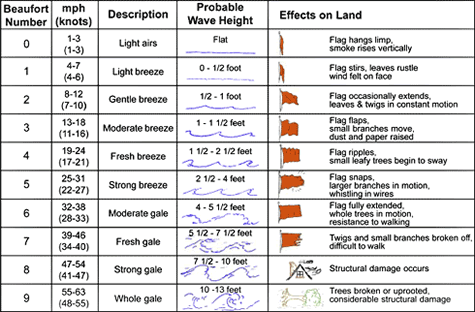The movement of air from higher to lower pressure is the main cause of winds. During the day the land heats up faster than the water. Warmed air from the land rises up and is replaced by colder, heavier air from the surface of the water. This process of air moving from one place to another is wind.

Sometimes features on the land like mountains, steep cliffs or tall trees can create turbulence in the air as it moves from land to sea. Good navigators will learn how the local winds behave and anticipate problems before they arise.
Wind speed is an important reading to take to predict the wind’s effect on your vessels course. The higher the wind speed the greater the effect on your vessel. One of the most widely used measurements of wind conditions is called the Beaufort scale. Sir Francis Beaufort, a Commander in the Royal Navy in 1805, devised a wind force scale to aid sailors in assessing wind conditions while at sea. Originally the wind conditions were described from the point of view of a sailor at sea, but over time the Beaufort scale has changed to include broader descriptions of ocean conditions and visual characteristics of wind as seen on land.

Questions:
Refer to your wind speed data and the Beaufort scale above.
Refer to Beaufort scale above.
